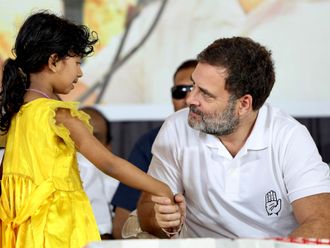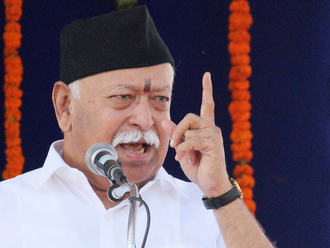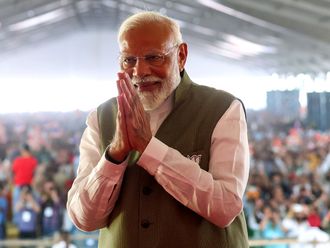
The BJP led by Narendra Modi is coming back to power. For a third time. With a comfortable majority. How do I know this? I don’t, for sure. No one can predict what happens in any election, least of all in an Indian election. Our electorate is so vast and, yes, so wise, that no one can take it for granted, let alone speak on its behalf.
It’s not over, as the popular saying goes, till the fat lady sings. As far as Indian elections go, it’s not over till the last vote is cast — and counted.
Then why do I say with so much confidence, even conviction, that Modi and his party will be back in power in two weeks’ time? The answer is simple. That is what the trends suggest. Or, to be a tad more precise, there is no contrary trend in sight as we approach the last phase of this seven-phase, 44-day election.
To continue with the above deduction, I might venture to add that I am reasonably assured of the validity of my prediction because I believe that Narendra Modi and Amit Shah have, once again, managed comprehensively to outsmart the Opposition. Let me explain.
First of all, the Modi-Shah duo set the narrative and the pace of this election with their slogan, “Ab ki baar, chaar sau paar.” Or “This time around, we’re crossing 400.” The number refers to the seat tally that was set as the ruling Bharatiya Janata Party’s official goal in the 543-member lower house, or Lok Sabha, of the Indian parliament.
While the entire Opposition, including leading critics of the government, are hell-bent to disprove this, they seem to have missed out on the crucial trick in this slogan, one that set the trap into which most of them fell.
Puzzles or paradoxes
What is that? Let us bring everyone back to the crucial halfway mark, which is necessary to form the government. That magic number is only 272. Anyone who gets more than this halfway mark will be invited to form the government. Therefore, even assuming that the BJP does not cross 400 — or, to push the argument to its logical extreme, even 300, that is three less than their 2019 tally of 303 — they will still have won this election.
Comprehensively. Decisively. As long as they get more than 272. Even if they get a few below this critical number, they can still easily form the government with the help of their National Democratic Alliance (NDA) partners. Given their vast resources and deep pockets, the BJP can even wean to their side the smaller parties and independents outside the NDA.
Therefore, how many seats does Modi really need to become the prime minister of India for his third term? I would say 250 are more than enough. Now, very few political commentators, psephologists, media persons, observers, or informed individuals, let alone the vast masses of common voters in India, would give them less than this figure.
The only person I have heard speaking openly about a number less than 250 is none other than Dr. Prabhakar Parakala, the eminent and courageous economist and, now revealed to be, outspoken critic of both Modi and his regime.
It is another matter that he also happens to be the husband of the current finance and former defence minister, Nirmala Sitharaman. Thereby hangs another of those puzzles or paradoxes of Indian politics.
Chugging its way to victory
But, as I said earlier, no one else of note that I know of gives BJP less than 250 in their projections. Not even Modi’s worst critics in the Congress and other opposition parties that make up the I.N.D.I. alliance. What this means is that by shifting the goal from 272 to 400, Modi-Shah effectively checkmated the Opposition even before voting began.
No amount of anti-incumbency, of which there is very little evidence on the ground, would pull down the BJP numbers to less than 250. In fact, they may even improve on their 2019 performance in crucial areas of the East and South, including West Bengal, Orissa, Andhra, Telangana, Tamil Nadu, even Kerala.
These extra seats may offset their losses, if any, in the Hindi heartland states where they have traditionally dominated. I already wrote about how in Uttar Pradesh, India’s largest state, which returns 80 members to the Indian parliament, the Modi-Yogi Adityanath double-engine Sarkar is expected to chug its way to victory comfortably, with numbers easily, possibly in double digits, above their last figure of 62.
The Opposition, the Swati Maliwal-scandal tainted Aam Aadmi Party (AAP) included, will have to content themselves, if at all, with the pyrrhic consolation of reducing the BJP’s juggernaut to less than 400. Or less than 350 or even 300 — if at all.
Anything much below this number seems like wishful thinking of those who may well have missed the bus. While the Modi-led BJP is easily first past the post.










